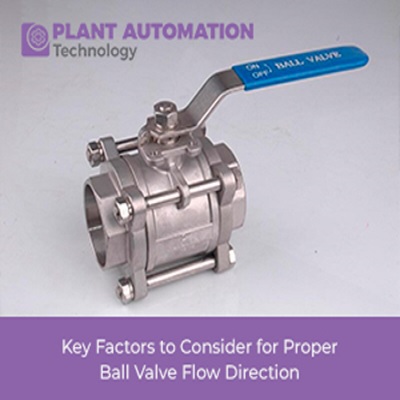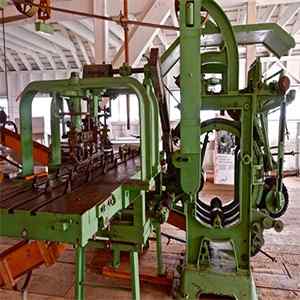Key Factors to Consider for Proper Ball Valve Flow Direction

Introduction
Ball valves play a crucial role in fluid control systems, allowing for precise control of flow rates and ensuring efficient operation. However, to maximize their performance, it is essential to consider the proper flow direction. In this article, we will explore the key factors to consider when determining the correct flow direction in ball valves.
Understanding Ball Valve Flow Direction
Flow direction refers to the path through which fluid travels within a ball valve. It significantly impacts valve performance and flow control. Proper flow direction ensures optimal operation and prevents potential issues due to flow reversals.
Factors Affecting Ball Valve Flow Direction
Several factors influence the flow direction of ball valves. One crucial factor is the design of the valve itself. The valve body and port configuration play a significant role in determining the flow direction. Additionally, the internal structure of the ball and the design of the seat influence the direction of fluid flow.
Operating conditions also affect flow direction. Fluid properties, such as viscosity, temperature, and pressure, can impact the direction of fluid flow through the valve. The fluid flow rate and velocity also need to be considered when determining the proper flow direction.
Piping system factors must be considered. The layout and arrangement of the piping system can influence the ball valve flow direction. The presence of bends, elbows, and fittings can create turbulence and affect the desired flow direction.
Considerations for Correct Flow Direction in Ball Valves
To ensure the correct flow direction, it is crucial to consider manufacturer instructions and specifications. Manufacturers guide on the appropriate flow direction for their ball valves. Following these instructions is essential for optimal valve performance.
Visual inspection of valve markings and indicators is another significant consideration. Ball valves have flow direction indicators on the valve body or handle. These indicators can help determine the correct flow direction during installation or maintenance.
Additionally, flow arrow markings on adjacent piping or equipment can provide valuable information about the desired flow direction. Checking these markings can help confirm the proper alignment of the ball valve and ensure consistent flow throughout the system.
Determining Flow Direction in Ball Valves
To determine the direction of flow in a ball valve, follow these steps:
- Examine the valve body for any flow direction markings or indicators provided by the manufacturer.
- Check the valve handle for any symbols or labels indicating the correct flow direction.
- Verify the flow arrow markings on adjacent piping or equipment connected to the valve.
- Refer to the valve's documentation and technical data for any specific instructions or recommendations.
By following these steps and considering the visual cues and markings, you can confidently determine the correct flow direction in ball valves.
Importance of Proper Ball Valve Flow Direction
Proper flow direction in ball valves is of the utmost importance for fluid control systems' optimal performance. When the fluid flows in the intended direction, the ball valve operates efficiently, providing accurate control over flow rates. This ensures that the system functions as intended and achieves the desired results.
Flow reversal is a notable outcome resulting from an incorrect flow direction, wherein the fluid attempts to move contrary to the intended path. Multiple factors, such as pressure differential changes or improper installation, can contribute to this phenomenon. Flow reverse not only compromises the valve's effectiveness but also carries significant repercussions.
Flow reverse can damage the ball valve and other components in the system. The valve may experience excessive wear and tear, leading to leakage or failure. In addition, flow reversal can disrupt flow patterns, affecting downstream equipment performance. For example, pumps or other control valves may not function optimally if they receive fluid in the wrong direction. This can result in decreased efficiency, increased energy consumption, or even system failure.
By ensuring the proper flow direction, you can mitigate flow reversal risks. The ball valve will operate smoothly, reducing the chances of damage and improving the overall lifespan of the valve and the entire system.
Another advantage of considering the flow direction in ball valves is the consistent and accurate control of fluid flow rates. When the fluid flows in the intended direction, the ball valve can effectively regulate the flow and maintain the desired flow rates. This is particularly critical in applications where precise control over flow rates is essential, such as industrial processes, chemical dosing systems, or water treatment plants.
Furthermore, proper flow direction allows for optimal utilization of valve design features. Ball valves function most efficiently when fluid flows in a specific direction. The internal components, such as the ball and seat, are designed to minimize pressure drops and provide optimal sealing in the intended flow direction. By ensuring the correct flow direction, you can fully utilize these design features and achieve the desired performance from the ball valve.
| Also Read: Enhancing Efficiency with Intelligent Valve Types in Industrial Automation Systems |
Conclusion
To achieve optimal performance and efficient operation, it is crucial to comprehend and account for the essential factors related to the ball valve flow direction. By carefully considering aspects like valve design, operating conditions, and piping system layout, one can determine the flow direction. Adhering to manufacturer instructions, examining valve markings, and utilizing flow arrow indicators are vital measures in guaranteeing ball valve alignment. These actions help prevent flow reverse problems and ensure seamless fluid control system functioning.
Remember, considering flow direction is not only critical during installation but also during regular maintenance and system upgrades. By prioritizing the correct flow direction in ball valves, you can enhance fluid control system reliability and performance.







